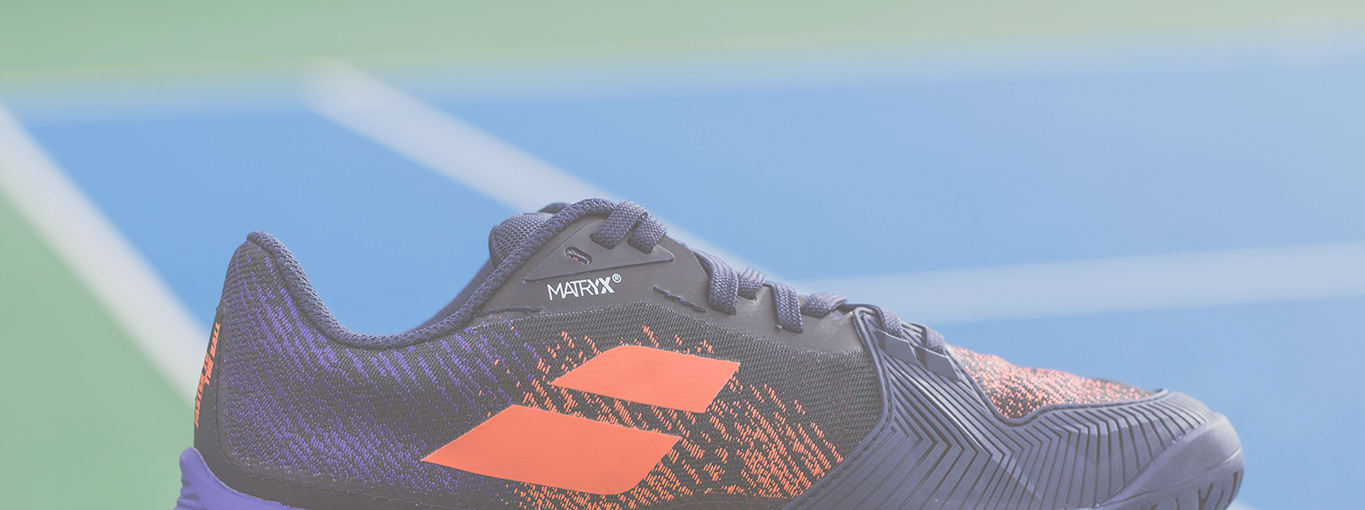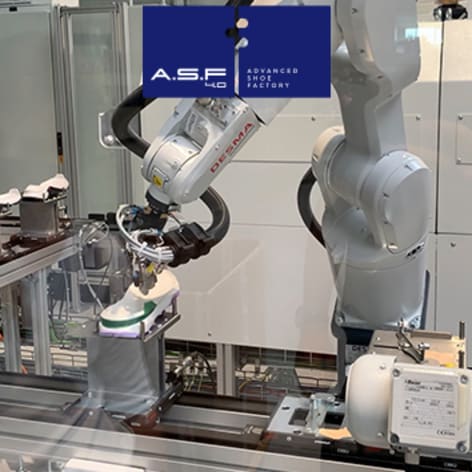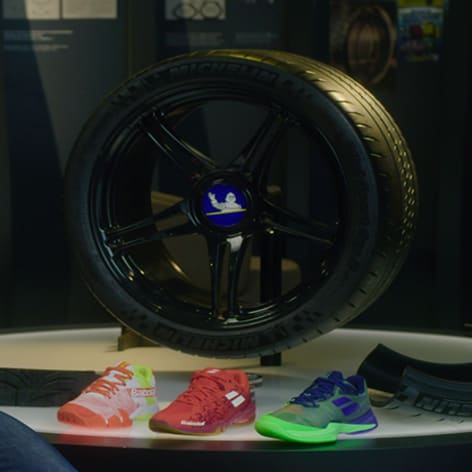The American entrepreneur Victor Kiam became famous with the phrase “I liked the product so much I bought the company!” And there’s something about Babolat’s partnership with Chamatex that reminds one of Kiam’s enthusiasm – Babolat was so impressed with the way Chamatex worked on improving Babolat’s tennis and padel shoes that it invested in Chamatex’s pioneering automated shoe factory.
Good partnerships in any walk of life are based on trust and ease of working, so it’s little wonder that companies that come together for one purpose often end up working on other projects.
When Babolat started making shoes in 2003 after years of building its reputation through strings – and later racquets – it partnered with another French iconic brand Michelin to make the soles. Ten years later it partnered with the textiles company Chamatex to improve the upper part of Babolat’s growing range of shoes, and in the process created the ultra-light tennis and padel shoe.
That proved such a successful partnership that Babolat then teamed up with two other big-name French sports brands, Salomon and Millet, to take an investment stake in Chamatex’s Advanced Shoe Factory 4.0 (ASF), which opened in September 2021. And as all four firms are within 200 kilometres of each other, the ASF 4.0 is a remarkable achievement for local cooperation in the Auvergne-Rhône-Alpes region of south-eastern France.
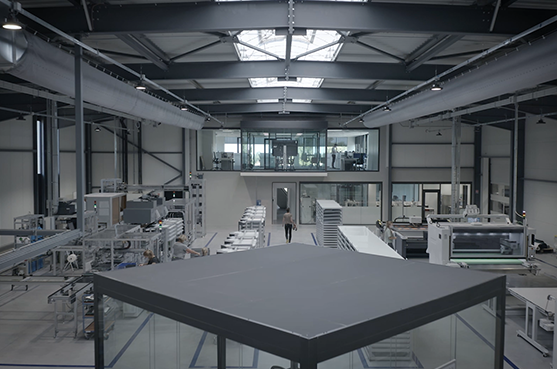
The quest for the ‘ultra-light tennis and padel shoe’
Most sports are all about being in the right place at the right time, with tennis and padel no exception. Getting to the ball as quickly as possible is one of the most important elements, which means a lighter shoe helps players maximise their court coverage and stamina.
Since Babolat’s first footwear was launched in 2003 – bearing the ‘Michelin man’ logo on the sole – the aim has been to constantly improve the shoes in terms of fit, comfort, durability, flexibility and stability. And make them as light as possible, to give the wearer a real advantage as a match wears on. Oh, and they have to be affordable too.
With Babolat based in Lyon, there was an ideal partner in the nearby town of Ardoix. Chamatex is a technical expert manufacturer that produces over 10 million m2 of textiles every year for various sectors of industry. Its chief executive Gilles Reguillon is a big sports fan who was looking to diversify his business.
“Our project was to develop an ultra-light shoe,” explains Mateo Castro, Babolat’s product line manager for footwear. “Generally we use synthetics that are hard-wearing and injected with polyurethane, which is heavy. Our shoes weighed around 400–450 grams, and we wanted to reduce that drastically – so we called them in.
Getting down to 300g
“Our design department got in touch with Chamatex, and since they are only 100 kilometres away, it’s practical for visits. The first discussions started in 2013, and then in 2014 and 2015, we went back and forth working on the quality of the fibres, trying polyester, Nomex and polyamide. We did lots of tests in the lab and on the court, and came up with Matryx technology. The first shoe, the Jet, was launched in 2016.”
That original Jet shoe weighed 330g, compared with Babolat’s Propulse 5 which was over 400g. The aim at the time was to compete with the benchmark for lightweight footwear, which was around 330–340g. The Jet range expanded over the following five years to include the Jet Team, Jet Mach 2, Jet Premura and Jet Ritma.
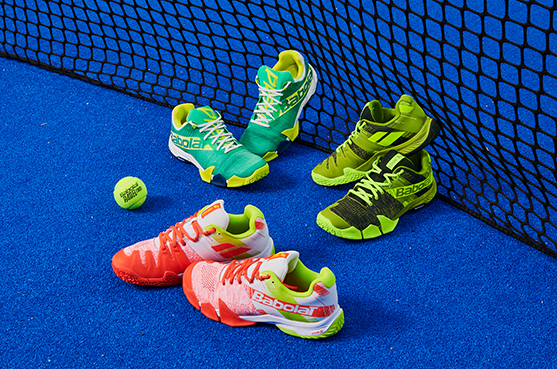
“The biggest obstacle was right at the start,” Gilles Reguillon explains. “We needed to find the right combination of performance, mechanics and durability on the one hand, and weight on the other – to lose at least 100g, and to do it all at the right price. We managed to solve the problem by combining various materials. We added polyamide for resistance to wear and tear, Kevlar for resistance to traction, and a coating on the fibres to increase the durability. If we had tried to do that using just one material, it would have been much too expensive.”
Matryx technology has been used in tennis and padel by Babolat, for example in the Jet Mach 3 aimed mainly at tennis (and used by professionals such as Federico Delbonis, Evgeny Donskoy and Yuichi Sugita) and the Jet Premura 2 which is ideally suited to padel. The technology is also used in other sports in which Chamatex works with other brands, such as football, trail running, hiking and handball, but Babolat has exclusivity in racquet sports.
The Jet Premura 2 weighs in at a mere 307g for a European size 43 (US size 9.5), the standard size for men’s shoes, which begs the question: will there be a day when Babolat sports shoes using Matryx technology weigh less than 300g? “We’ve already made huge progress,” says Gilles. “You can always go lower, but it’s a balance between reducing the weight and maintaining the side support for the foot. It’s a tightrope walk between stability and weight.”
Buying into state-of-the-art shoe production
With such a successful partnership, the basis of trust and cooperation was in place when Chamatex told Babolat of its plans to build and operate the world’s first automated shoe factory. The aim was to create an efficient, environment-friendly, robotically organised production plant that could be responsive to changes in technology and demand.
Alongside Babolat, the trail running and hiking footwear company Salomon and the mountain clothing and equipment retailer Millet also invested in the Advanced Shoe Factory. The foundation stone was laid in 2020, and the factory at a 2000m2 site in Ardoix opened in 2021. In an industry which is still largely reliant on manual labour, the automation is truly innovative.
Babolat’s chief executive, Eric Babolat, the great-great-grandson of the firm’s founder Pierre Babolat, described the collaboration to get the ASF 4.0 built as “a match between individuals and directors willing to take risks to achieve a goal of innovation and relocation by combining the best of their expertise.”
Gilles Reguillon of Chamatex adds, “The ASF 4.0 will allow us to add additional functions to Matryx technology. ASF 4.0’s R&D capacity and innovative methods provide our clients with optimum reactivity on the European market. We’ve increased our capacity to test smaller series on European consumers to guarantee that we’re answering their needs.”




